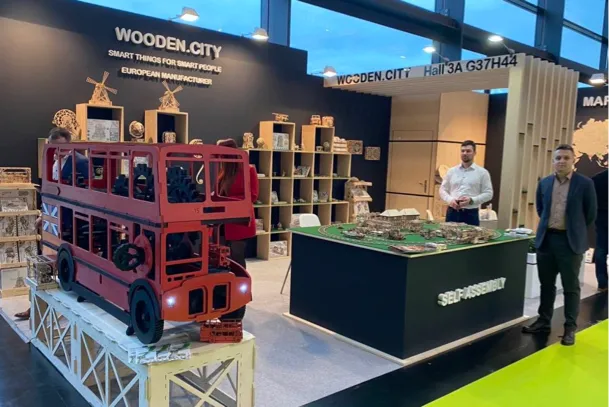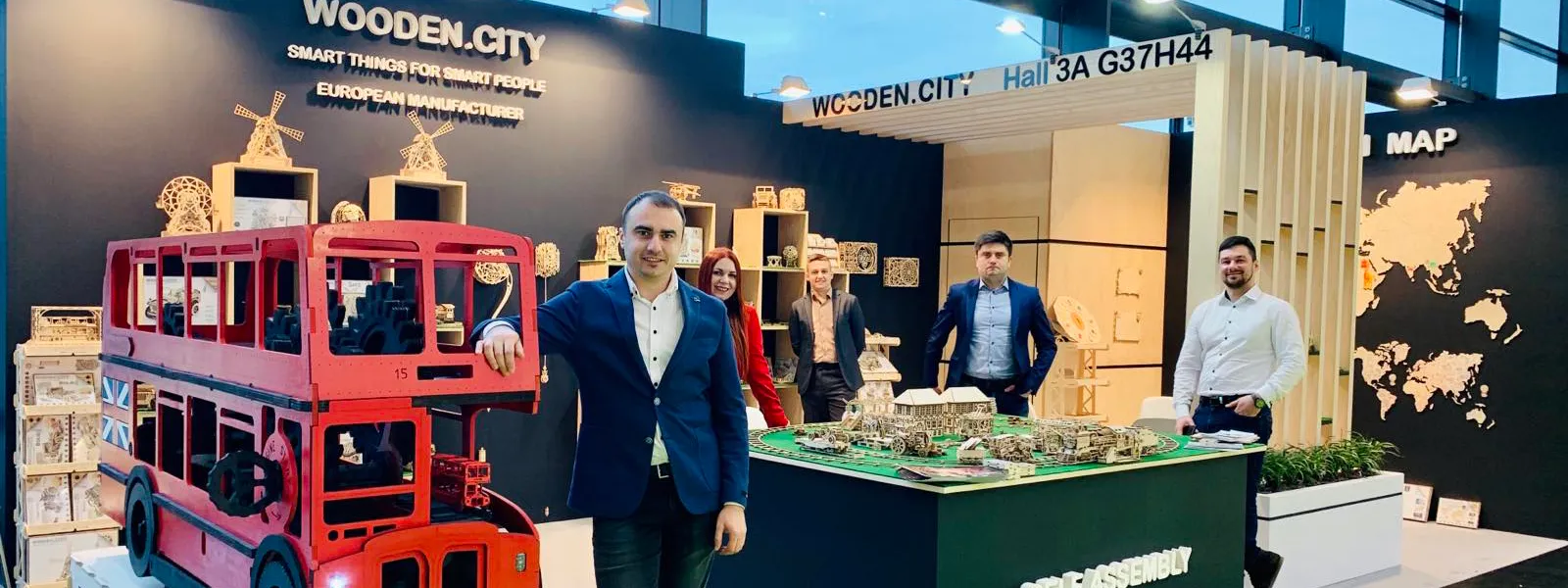Introduction
At Wooden City, we take immense pride in our wooden 3D puzzles, which are marvels of craftsmanship and engineering, combining artistry with intricate design. But how are these fascinating puzzles made? In this article, we delve into the world of wooden 3D puzzle craftsmanship, exploring the detailed process from concept to completion. We’ll share insights from our talented artisans, giving you a behind-the-scenes look at their tools, techniques, and sources of inspiration.
The Conceptual Stage: From Idea to Design

Inspiration and Creativity
Every wooden 3D puzzle at Wooden City begins with an idea. Our craftsmen draw inspiration from a variety of sources, including architecture, nature, machinery, and historical artifacts. The initial concept often starts as a sketch or a series of drawings, capturing the essence of the desired model.
Collaboration and Brainstorming
Many of our puzzle designs are the result of collaborative efforts. Designers, engineers, and artists work together to refine the initial concept, considering factors such as complexity, aesthetic appeal, and functionality. Brainstorming sessions help us identify potential challenges and innovative solutions.
Detailed Design and Blueprint
Once the concept is finalized, the next step is creating detailed blueprints. Using computer-aided design (CAD) software, our craftsmen develop precise digital models of the puzzle. These models include every piece and joint, ensuring that each component fits together perfectly. CAD software allows for meticulous planning and adjustments, which are crucial for complex 3D puzzles.
Selecting Materials: The Foundation of Quality
Choosing the Right Wood
The choice of wood is critical in the creation of Wooden City’s 3D puzzles. We select high-quality, sustainable birch wood. This type of wood are durable, easy to work with, and have an appealing grain that enhances the puzzle’s visual appeal.
Environmental Considerations
Sustainability is a key consideration in material selection. We source wood from responsibly managed forests and use environmentally friendly practices in our workshop. This commitment to sustainability ensures that the beauty of natural wood can be enjoyed by future generations. We have an international FSC certificate – it means that every tree cut down for the production of puzzles is replanted
Crafting the Puzzle: Tools and Techniques
Cutting and Shaping
The crafting process begins with cutting the wooden sheets into individual puzzle pieces. Traditional fret saws were once used for this purpose, but our modern workshop now employs advanced laser cutting technology. Laser cutters offer unparalleled precision, allowing for intricate designs and detailed patterns that would be impossible to achieve by hand.
Engraving and Detailing
Laser engraving is another crucial technique in our puzzle-making process. This process adds fine details and textures to the pieces, enhancing the overall aesthetic of the puzzle. Engravings can include anything from delicate patterns to lifelike textures, depending on the puzzle’s design.
Assembly and Testing
Once all the pieces are cut and engraved, the next step is assembling the prototype. Our craftsmen meticulously put together the puzzle to ensure that all pieces fit perfectly and that the final model functions as intended. This stage often involves multiple iterations, with adjustments and refinements made to improve the design.
Finishing Touches: Bringing the Puzzle to Life
Sanding and Polishing
After assembly, each puzzle piece is carefully sanded and polished to achieve a smooth, tactile finish. This step not only enhances the puzzle’s appearance but also ensures that the pieces fit together seamlessly and are comfortable to handle.
Staining and Varnishing
Many of our wooden puzzles are stained or varnished to highlight the natural grain of the wood and protect the surface from wear and tear. Our craftsmen choose finishes that complement the puzzle’s design, adding depth and richness to the wood’s natural color.
The Craftsman’s Perspective: Stories and Insights
Passion for Craftsmanship
Our craftsmen at Wooden City are deeply passionate about their work. Many express a profound love for woodworking and satisfaction in creating something beautiful and functional. “There’s something incredibly rewarding about taking a raw piece of wood and transforming it into a complex, interactive model,” says one of our artisans.
Overcoming Challenges
Crafting wooden 3D puzzles is not without its challenges. Precision is paramount, and even a small error can affect the entire puzzle. Our craftsmen must have a keen eye for detail and a steady hand. “Each piece needs to fit perfectly. It’s like a large, intricate jigsaw puzzle where every element matters,” explains another craftsman.
Continuous Learning and Innovation
The world of wooden puzzles is constantly evolving, with new techniques and technologies emerging regularly. Our craftsmen continually update their skills and knowledge to stay at the forefront of the industry. “We’re always learning, always experimenting with new ideas and methods,” shares one experienced puzzle maker.
Conclusion
The creation of wooden 3D puzzles at Wooden City is a testament to the skill and creativity of our craftsmen. From the initial concept to the finishing touches, each stage of the process requires meticulous attention to detail and a passion for perfection. The result is a beautiful, engaging puzzle that offers hours of enjoyment and a sense of accomplishment once completed.
FAQs
What were the first wooden puzzles used for? The first wooden puzzles, created by John Spilsbury in the 1760s, were used as educational tools to teach children geography.
How did the industrial revolution impact wooden puzzles? The industrial revolution introduced new machinery and production techniques, allowing wooden puzzles to be produced on a larger scale and making them more accessible to the general public.
What is a jigsaw puzzle? A jigsaw puzzle is a type of puzzle where pieces are cut into interlocking shapes. The term comes from the jigsaw tool used to cut the pieces, which allows for more precise and intricate designs.
What are 3D wooden puzzles? 3D wooden puzzles are puzzles that allow enthusiasts to build three-dimensional models of objects such as buildings, vehicles, and more. They offer a greater challenge and can serve as decorative items once completed.
How has technology influenced modern wooden puzzles? Technology, such as computer-aided design (CAD) and laser cutting, has allowed for the creation of highly detailed and precise wooden puzzles with complex shapes and patterns.
Can wooden puzzles be personalized? Yes, many companies now offer personalized wooden puzzles, where customers can create puzzles based on their own photographs or designs, adding a unique and personal touch to the puzzle experience.
